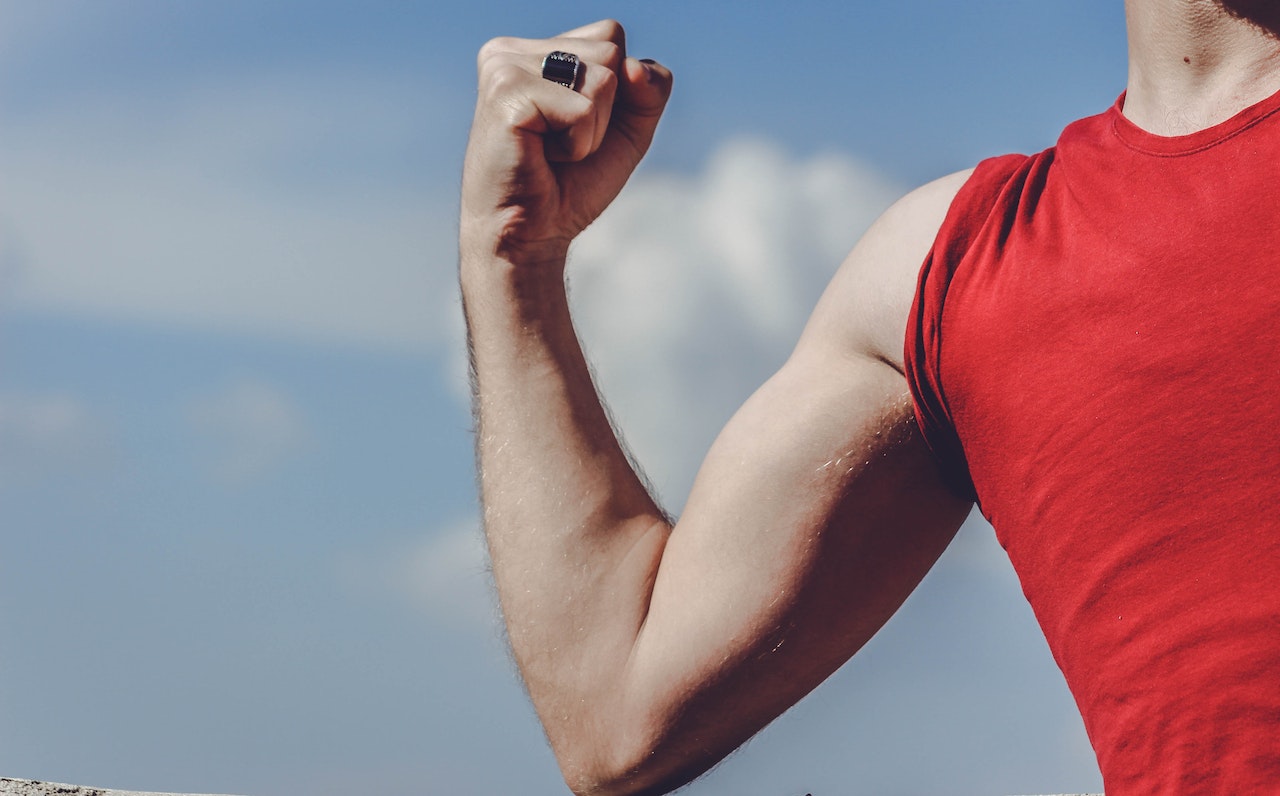Biceps are small muscles in your upper arm, but building them takes patience, confidence, and hard work. If you are starting to develop your biceps, remember one key thing: focus on curls. Different variations of these curls can be performed by using adjustable dumbbells that will bring out the best of your upper arms. Ready to build stronger arms at home? Shop Ativafit Adjustable Dumbbells and power up your workouts.

What Is the Bicep?
The biceps, or biceps brachii, are a two-headed muscle found on the front surface of the upper arm. It is an important muscle for elbow flexion, forearm rotation, and lifting motions. The two heads of the muscle—the short head and the long head—cooperate to provide an extensive range of motion, like rotating the palm upward or drawing weight toward your chest.
The triceps make up most of the mass in the arm, but the biceps are very visible and important for achieving a good shape. The biceps also play a key role in achieving strength, fitness, and other goals, such as muscle growth and functional development.
Bicep Anatomy Breakdown:
-
Origin Points: Shoulder and upper arm
-
Insertion: Radius bone of the forearm
-
Primary Functions: Elbow flexion, forearm rotation, palm-up (supinated) motions
What are the Best Bicep Workouts for Arm Muscle?
A 2014 study by the American Council on Exercise (ACE) found that some of the best exercises for your biceps involve lifting or curling weights towards your shoulder. Here’s an effective workout routine that builds arm muscles by incorporating resistance, rotation, and flexion exercises.
1. Standing Dumbbell Curl
Standing Dumbbell Curl is the go-to exercise for anyone starting bicep development. With the dumbbells, you can train your arms separately with the most suitable weight for each arm, tailored to their individual strength levels.
It is straightforward in practice as well.
-
Start by holding an Ativafit 66 lbs adjustable dumbbell in each hand with your preferred weight at your side.
-
Then take turns curling the dumbbell up, using an underhand grip.
-
Keep a shoulder-wide gap between the legs and a tight pull between the shoulder blades.

2. Dumbbell Concentration Curl
Want to make and feel your biceps work? Try some adjustable dumbbell concentration curls. To flawlessly execute the exercise:
-
Sit down on an Ativafit Pro adjustable weight bench, rest your elbows on your inner thigh, and lift the dumbbell from a complete extension to contraction.
-
Exercising one arm at a time allows you to focus on your weaker arm and achieve better results.

3. Incline Dumbbell Curl
If you face trouble maintaining your form while curling, an incline dumbbell curl is the best option. By lying down on an inclined bench, you’ll be able to eliminate momentum and achieve a befitting form.
-
Lie down on the inclined workout bench while holding an adjustable dumbbell in each hand.
-
Now extend your hands straight and lift the weight to your shoulder without moving your shoulders.
-
Pause at the top and release.

4. Hammer Curl
Hammer curls effectively engage the biceps and the brachialis, a muscle that lies beneath the biceps. By focusing on the brachialis, you’ll be able to raise the muscle from the bottom and extend your arm’s girth.
A dumbbell is one of the most useful equipment for the hammer curl.
To perform it:
-
Start by holding an Ativafit adjustable dumbbell perpendicular to the floor, with your upper arms close to your body.
-
Bring the arms down and back up to squeeze your biceps.
-
Ensure your torso and elbows remain steady.

If you are in the gym, you can use the cable version with a rope grip for better results. It targets the brachialis and forearm but is limited to lower or medium reps, 8 to 12 reps per set or more. All you need to do is stand upright, hold the cables in a neutral grip and pull the weight stack.
Benefits of Bicep Workouts for Building Arm Muscle
Exercising your biceps is not just about looking good; it's also a crucial aspect of overall fitness. Incorporating biceps exercises into your workout regimen offers several benefits for overall arm strength, functionality, and appearance.
1. Enhanced Arm Strength and Function
Strong biceps help you with everyday tasks like lifting, pulling, and carrying. Whether you're moving furniture or doing pull-ups, well-conditioned biceps support your upper-body movement and control.
2. Improved Muscle Shape and Definition
By working on both the long and short heads with exercises such as incline dumbbell curls and hammer curls, you can enhance the shape and peak of your arms, resulting in a more developed appearance and improved pump during training.
3. Injury Prevention and Joint Support
Well-developed biceps provide support to the elbow and shoulder joints, which helps minimize the chances of injury while working out the upper body or playing sports. This can be advantageous for the core, back muscles, and even wrists.
4. Improved Performance in Compound Movements
Developed biceps are also favorable for improved performance in larger compound movements, such as rows, chin-ups, and pressing movements, which makes them essential for well-balanced upper-body training.
5. Complements Triceps Training
To develop well-developed arms, you need to build strength in both your biceps and triceps.Together, these muscles give your arms a strong and muscular look, especially when viewed from different angles.
Bicep Workout Routine
|
Day |
Exercise |
Sets x Reps |
|
Monday |
Standing Dumbbell Curl |
4 x 10–12 |
|
Hammer Curl |
3 x 12 |
|
|
Wednesday |
Incline Dumbbell Curl |
3 x 10 |
|
Dumbbell Concentration Curl |
3 x 12 each arm |
|
|
Friday |
Standing Dumbbell Curl (Heavier) |
4 x 8–10 |
|
Hammer Curl (Drop Sets) |
3 sets to failure |
Conclusion
And there you have it! These four practical exercises will help build up your biceps muscles in no time. Just remember that they can be particularly strenuous, so be sure to take a break between exercises.
Frequently Asked Questions
How often should I train my biceps for muscle growth?
Train 2–3 times per week, with a minimum of 48 hours of rest between workouts, for optimal muscle growth and hypertrophy.
Do you need to perform isolation exercises for the biceps?
Yes, for maximum development of the biceps, isolation exercises such as concentration curls play a vital role in focused growth.
Can pull-ups be substituted for curls in a bicep workout?
Pull-ups are great for developing back muscles and also work biceps, but curls provide more focused stimulation.
What is the optimal angle for incline curls?
A 45–60 degree angle works best to allow for maximum stretch and contraction of the biceps.





